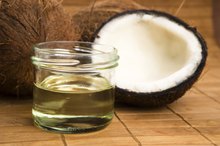Can Oatmeal Help with Fatty Liver?
The liver works ceaselessly to filter more than a liter of blood every minute, and it has a number of other functions that impact every body system, including immune function, digestion and absorption of nutrients. Hence, when the liver becomes sluggish due to damage, infection or a health condition, the entire body is affected. A fatty liver occurs when fats build up in the liver tissue. This may occur due to alcoholism, illness or because the liver has trouble breaking down fats.
Causes of a Fatty Liver
A wide range of diseases, illnesses and other causes can increase your risk of a fatty liver. These include:
- side effects of certain medications
- high cholesterol levels
- high levels of triglyceride fats in the blood
- obesity
- rapid weight loss
- type 2 diabetes
- metabolic syndrome
In some cases, there may be no known cause for this condition. Treatment for fatty liver disease also varies depending on the cause and symptoms. ').
- A wide range of diseases, illnesses and other causes can increase your risk of a fatty liver.
Types of Fatty Liver Disease
How Many Calories Are in Frozen Yogurt Compared with Ice Cream?
Learn More
Fatty liver disease can also occur in several forms that may have no or little impact on health. In nonalcoholic fatty liver, gradual fat buildup in the liver may not cause further complications or symptoms. This type of fatty liver is the most common. In nonalcoholic steatohepatitis, fat buildup in the liver leads to inflammation, impairing liver function and causing illness and complications. In a third type, nonalcoholic fatty liver disease–associated cirrhosis, inflammation causes scarring of the liver tissue, which can eventually lead to liver failure in severe cases.
- Fatty liver disease can also occur in several forms that may have no or little impact on health.
- In nonalcoholic steatohepatitis, fat buildup in the liver leads to inflammation, impairing liver function and causing illness and complications.
How Oatmeal Helps
Oatmeal and other foods that are rich in soluble fiber help to reduce low-density lipoprotein, or LDL, an unhealthy form of cholesterol that can accumulate in the liver, blood vessels and other areas 3. The soluble fiber affects blood cholesterol levels by reducing the absorption of cholesterol into the bloodstream from the intestines. Healthy bacteria in the small intestines digest soluble fiber; insoluble fiber is not digested but helps to promote regular bowel movements.
How Much Fiber
Content of Vitamin K in Olive Oil
Learn More
A 1.5-cup serving of cooked oatmeal contains approximately 6 grams of fiber. Just 5 to 10 grams of soluble fiber per day can decrease your total and LDL cholesterol levels. Other foods that contain high amounts of soluble fiber include:
- legumes
- beans
- barley
- wheat bran
- whole grains
- prunes
- apples
- pears
The American Dietetic Association advises that a healthy diet should include 25 to 38 grams of both soluble and insoluble fiber per day; most people only consume half of the recommended amounts. Adding oatmeal and other soluble-fiber food sources to your diet can help reduce the risk and progression of fatty liver disease and other health complications.
- A 1.5-cup serving of cooked oatmeal contains approximately 6 grams of fiber.
- Just 5 to 10 grams of soluble fiber per day can decrease your total and LDL cholesterol levels.
Related Articles
References
- University of Maryland Medical Center: Cirrhosis
- Harvard Health Publications: “Portfolio” Beats Low-Fat Diet For owering holesterol
- LiveScience: Does Eating Oatmeal Help Lower Cholesterol?
- National Institute of Diabetes and Digestive and Kidney Disease. What Is NAFLD and NASH?
- National Institute of Diabetes and Digestive and Kidney Disease. What Is NAFLD and NASH?
- National Institute of Diabetes and Digestive and Kidney Disease. How Can My Diet Help Prevent or Treat NAFLD or NASH?
- US National Library of Medicine. Medline Plus. Fatty Liver Disease.
Writer Bio
Noreen Kassem is a hospital doctor and a medical writer. Her articles have been featured in "Women's Health," "Nutrition News," "Check Up" and "Alive Magazine." Kassem also covers travel, books, fitness, nutrition, cooking and green living.









